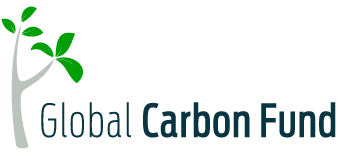Amazon Leads Corporate Clean Energy Contracts, Hitting Record High at 100GW
Corporate clean energy contracts have hit an impressive 100 gigawatts (GW) globally, a major milestone for renewable energy, as reported by the Clean Energy Buyers Association (CEBA). This shows that more businesses are opting for clean energy to cut their carbon footprint and move toward sustainable energy.
As more companies invest in clean energy, the global renewable market is growing and changing the energy landscape.
The Rise of Corporate Renewable Energy Procurement
Over the past decade, corporations have become major players in the renewable energy market. Big multinational companies, like tech giants, retail chains, and manufacturers, are signing power purchase agreements (PPAs). These agreements help them get clean electricity for their operations.
These contracts allow businesses to buy electricity from wind and solar farms. This, in turn, helps fund new projects and increases the use of renewable energy.
The Clean Energy Buyers Association (CEBA) reported that companies bought 21.7 GW of clean energy in 2024 alone. This was the highest amount in a single year. This brings the total corporate-driven clean energy capacity in the U.S. to 100 GW since 2014.

One gigawatt (GW) of electricity can power about 750,000 U.S. homes for a year. This shows how much corporations affect the energy grid.
One of the key drivers behind this trend is the push for sustainability. Companies face growing pressure from investors, customers, and regulators to cut greenhouse gas emissions. Businesses can buy renewable energy, helping them rely less on fossil fuels. They can also lower costs and reach their climate goals.
The Role of Solar, Wind, and Emerging Technologies
Solar and wind power have been the primary sources of clean energy adopted by corporations. The International Energy Agency (IEA) reports that in 2024, solar photovoltaic (PV) installations hit 2.2 terawatts (TW) worldwide. Wind energy capacity grew significantly, too, as shown below.

Corporate PPAs are key to this growth. They give developers a steady income and speed up project development.
In 2024, solar energy made up 73% of corporate clean energy contracts. This happened even with problems like permitting delays and grid interconnection issues.
- RELATED: 2025: The Year Clean Energy Dominates with Record $670 Billion Investment, Trumping Oil & Gas
Wind energy made up 7.7%, while nuclear power surprisingly entered the market with 1.5 GW in corporate procurement.

- Battery storage capacity increased by a remarkable 300%. This highlights the growing emphasis on energy storage solutions.
Google’s 115-megawatt (MW) deal with Fervo in Nevada is a big move for geothermal energy. This contract uses a new tariff system. It helps protect customers from the costs of new technologies.
Microsoft and Amazon have taken the lead in nuclear power deals. This shows how companies are diversifying their clean energy plans. Nuclear energy was not part of corporate contracts in 2023, but in 2024, companies bought 1.5 GW.
Which Companies Are Leading?
Tech companies have been at the forefront of corporate renewable energy procurement. In 2024, Amazon remained the top corporate buyer for the 5th year in a row. It invested in more than 600 renewable energy projects worldwide.
In Mississippi, for example, projects backed by Amazon now account for 24% of solar electricity on the state’s grid.
Other major corporate buyers include:
- Google: With extensive investments in wind, solar, and geothermal projects.
- Microsoft: A leader in nuclear and battery storage agreements.
- Meta (formerly Facebook): A major purchaser of wind energy for its data centers.
- General Motors and Ford: Investing in clean energy to power manufacturing operations.
Rehonally, the United States is the top market for corporate PPAs. It accounts for almost 50% of all global contracts.
However, Europe and Latin America are rapidly expanding, with companies in India and China also increasing their commitment to clean energy.
The Impact on Global Energy Markets
Corporate clean energy contracts are growing. This trend impacts the global energy sector in several ways:
- Accelerating the Clean Energy Transition. Corporate demand is driving investment in new wind, solar, and battery storage projects.
- Decarbonizing Supply Chains. Many companies are encouraging suppliers to transition to renewable energy, magnifying the impact beyond individual businesses.
- Job Creation and Economic Benefits. Renewable energy projects generate jobs and boost local economies, particularly in rural areas where large-scale wind and solar farms are developed.
- Grid Stability Challenges. Rapid clean energy adoption presents challenges for power grids, necessitating modernization and investment in energy storage.
Beyond 100 GW: Challenges and Future Outlook
Despite the rapid growth of corporate clean energy procurement, challenges remain.
For instance, many power grids require upgrades to handle the increased load from renewable sources. Moreover, complex regulations in certain countries make it difficult for businesses to sign PPAs.
Also, the rising demand for solar panels, wind turbines, and battery storage may lead to material shortages and project delays.
The IEA reports that global energy demand grew by 2.2% in 2024, outpacing the average 1.3% growth between 2013 and 2023. Most of this demand was met by low-emission energy sources. Now, global renewable capacity is about 700 GW.

Nuclear power hit its fifth-highest level in fifty years, showing the growth of low-carbon energy options.
Looking ahead, corporate demand for clean energy is expected to continue growing. Advances in battery technology, the rise of green hydrogen, and continued government incentives will further accelerate clean energy adoption.
With increasing commitments from businesses worldwide, the transition to a low-carbon economy is gaining momentum. The next major milestone — 200 GW of corporate clean energy procurement—may not be far off.
- INTERESTING READ: Trump’s EPA Cancels $20 Billion in Climate Funding: What It Means for Clean Energy
The post Amazon Leads Corporate Clean Energy Contracts, Hitting Record High at 100GW appeared first on Carbon Credits.



































